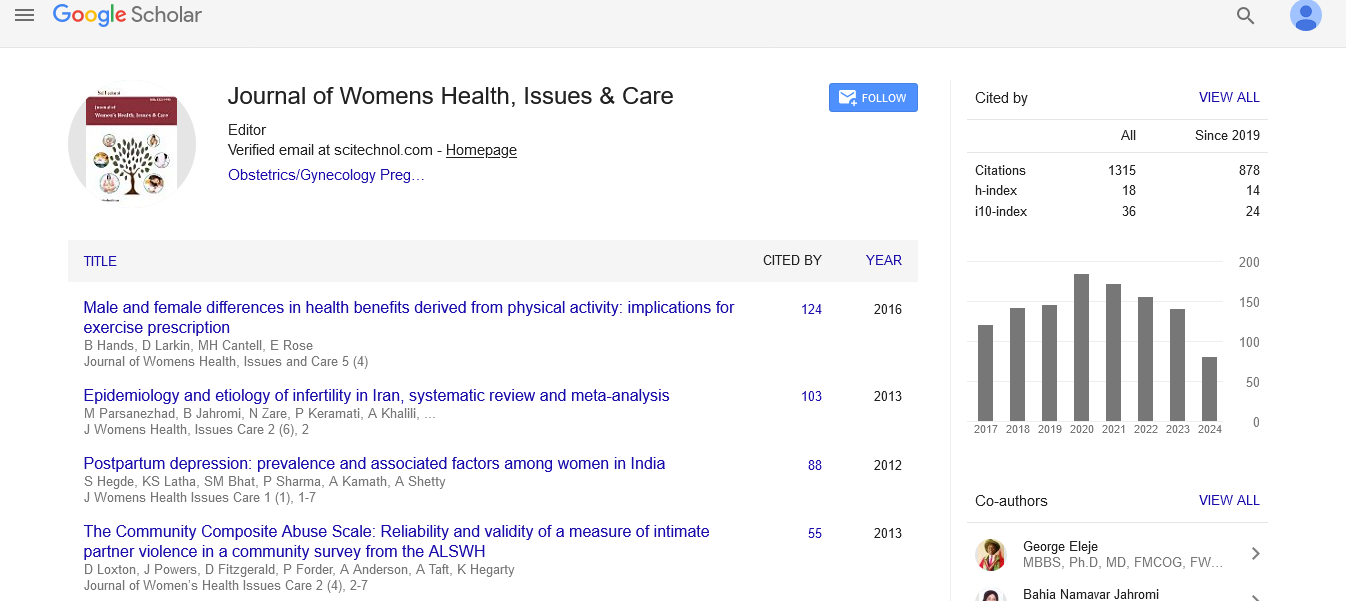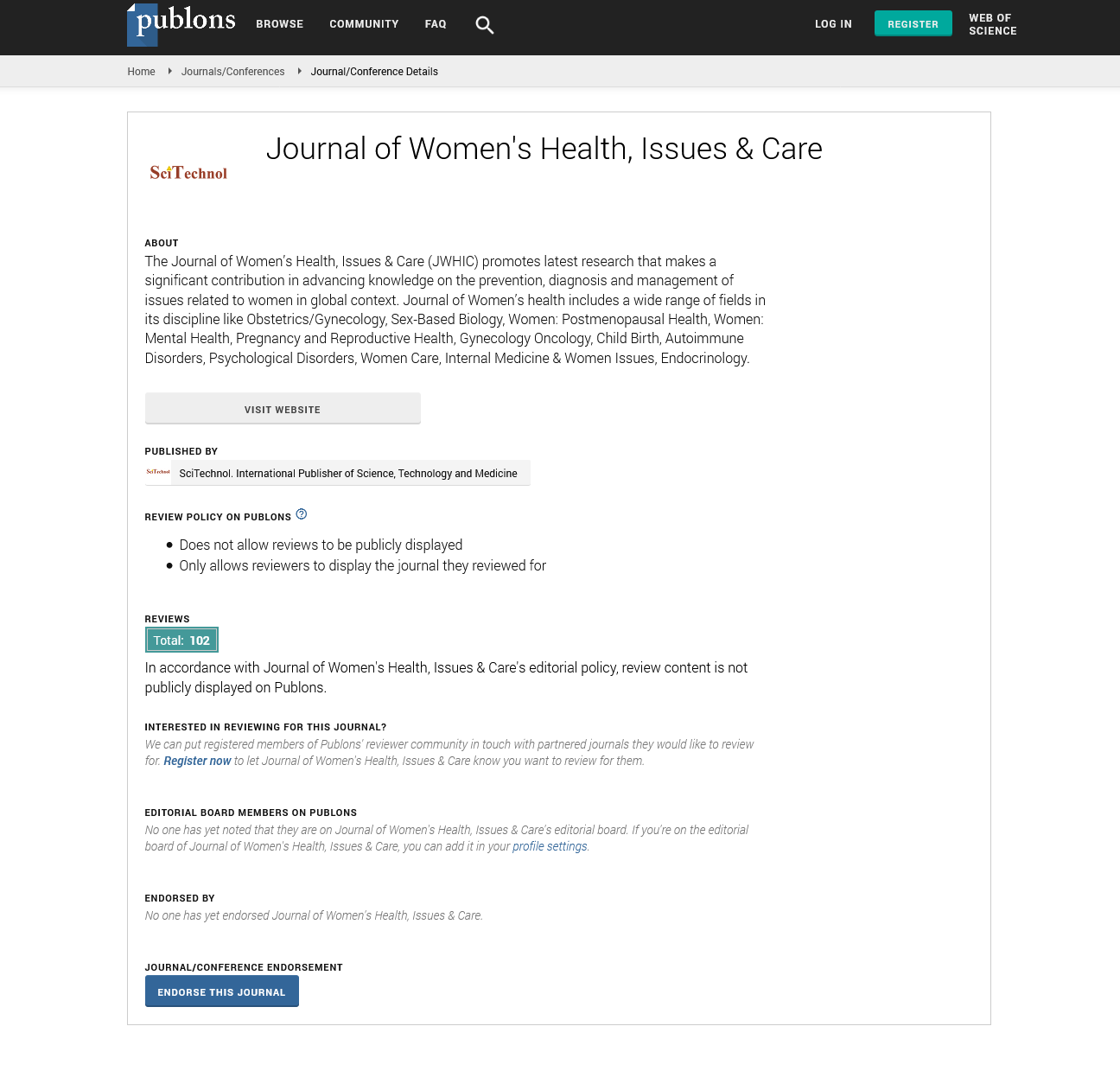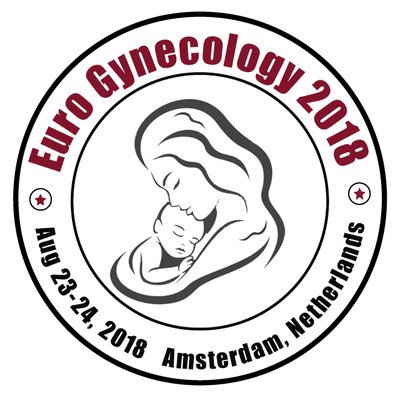Commentary, J Womens Health Vol: 13 Issue: 5
Perinatal Infections: Implications for Maternal and Neonatal Health
Harisa Kuina*
1Department of Clinical Microbiology, University of Sydney, Sydney, Australia
*Corresponding Author: Harisa Kuina,
Department of Clinical Microbiology,
University of Sydney, Sydney, Australia
E-mail: harissa_kuina2@gmail.com
Received date: 23 September, 2024, Manuscript No. JWHIC-24-156580;
Editor assigned date: 25 September, 2024, PreQC No. JWHIC-24-156580 (PQ);
Reviewed date: 09 October, 2024, QC No. JWHIC-24-156580;
Revised date: 17 October, 2024, Manuscript No. JWHIC-24-156580 (R);
Published date: 25 October, 2024, DOI: 10.4172/2325-9795.1000519.
Citation: Kuina H (2024) Perinatal Infections: Implications for Maternal and Neonatal Health. J Womens Health 13:5.
Description
Perinatal infections represent a significant challenge in maternal and neonatal health, contributing to morbidity and mortality worldwide. These infections occur during pregnancy, labor, or the immediate postpartum period and can be transmitted from the mother to the fetus or newborn through various pathways. The consequences of perinatal infections are profound, often resulting in preterm birth, low birth weight, congenital abnormalities, or neonatal infections, necessitating early detection and effective management strategies. A variety of pathogens, including bacteria, viruses, fungi and parasites, are responsible for perinatal infections. Common bacterial infections include Group B Streptococcus (GBS), Listeria monocytogenes and Escherichia coli, which are known to cause severe complications such as neonatal sepsis and meningitis. Viral infections, including Cytomegalovirus (CMV), Herpes Simplex Virus (HSV) and HIV, can lead to congenital infections or vertical transmission during delivery. Fungal pathogens, though less common, pose risks in immunocompromised populations, while parasitic infections such as toxoplasmosis remain a concern, particularly in regions with limited access to healthcare resources.
The transmission routes of perinatal infections include transplacental transfer, ascending infection from the genital tract, or exposure during delivery. Transplacental infections, such as syphilis or rubella, can cause fetal complications, including growth restriction, congenital malformations, or stillbirth. Ascending infections, like bacterial vaginosis, can trigger premature rupture of membranes and preterm labor. Neonates exposed during delivery may contract infections such as neonatal herpes or chlamydial conjunctivitis. The risk factors associated with perinatal infections are diverse and include maternal age, socioeconomic status, causal medical conditions and inadequate prenatal care. For instance, maternal diabetes or immunosuppression increases susceptibility to certain infections, while poor access to healthcare facilities exacerbates the burden of undiagnosed and untreated cases. Environmental factors, such as exposure to contaminated food or water, also contribute to the prevalence of infections like listeriosis and toxoplasmosis. The clinical appearances of perinatal infections in neonates are often nonspecific, making diagnosis challenging. Symptoms may range from respiratory distress and feeding difficulties to more severe presentations such as seizures or organ dysfunction. Laboratory investigations, including cultures, Polymerase Chain Reaction (PCR) testing and serological assays, play a vital role in identifying the causative agent and guiding treatment. Prenatal screening programs, especially for conditions like GBS, syphilis and HIV, have proven effective in mitigating risks through timely interventions.
Management of perinatal infections requires a multidisciplinary approach involving obstetricians, neonatologists and infectious disease specialists. Antibiotics, antivirals, or antifungals are employed based on the identified pathogen, with maternal treatment during pregnancy aimed at reducing vertical transmission risks. For example, intrapartum antibiotic prophylaxis is widely used to prevent GBS transmission, while antiviral therapy for maternal HIV significantly reduces the likelihood of neonatal infection. Supportive care for affected neonates, including respiratory support and nutritional interventions, is essential in modifying the impact of severe infections. Prevention strategies for perinatal infections emphasize the importance of maternal immunization, hygiene practices and comprehensive prenatal care. Vaccines against rubella, hepatitis B and influenza have significantly decreased the incidence of associated perinatal infections.
Conclusion
Despite advancements in prevention and treatment, perinatal infections remain a global health concern. Continued research is needed to develop novel diagnostic tools, improve therapeutic options and discuss antimicrobial resistance challenges. Collaborative efforts between healthcare providers, policymakers and public health organizations are essential to reduce the burden of perinatal infections and improve outcomes for mothers and their newborns. By prioritizing education, prevention and equitable access to care, the impact of these infections can be significantly moderated, ensuring better health for future generations. Educating pregnant women on safe food handling, avoiding exposure to potential sources of toxoplasmosis and practicing safe can further reduce risks. Enhancing access to healthcare services, particularly in low-resource settings, is vital for early detection and management.
 Spanish
Spanish  Chinese
Chinese  Russian
Russian  German
German  French
French  Japanese
Japanese  Portuguese
Portuguese  Hindi
Hindi 



